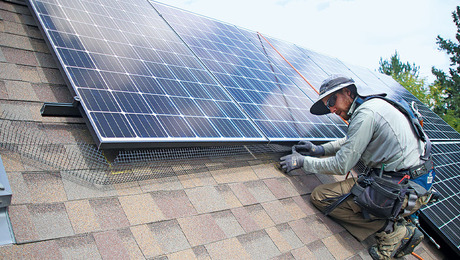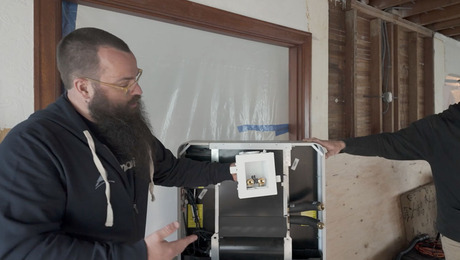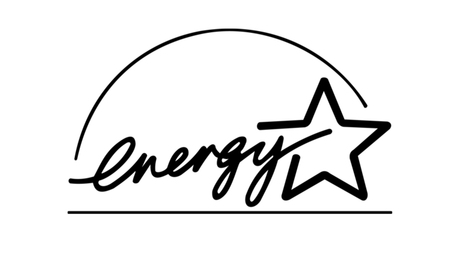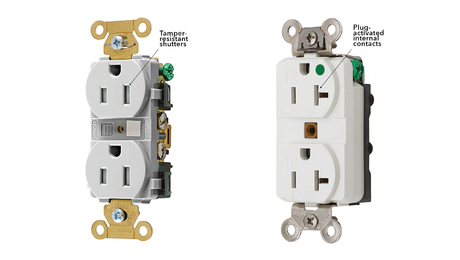The Trump Administration Wants to Eliminate the Energy Star Program
The end of this program will likely lead to higher energy bills and fewer business opportunities for the American people.
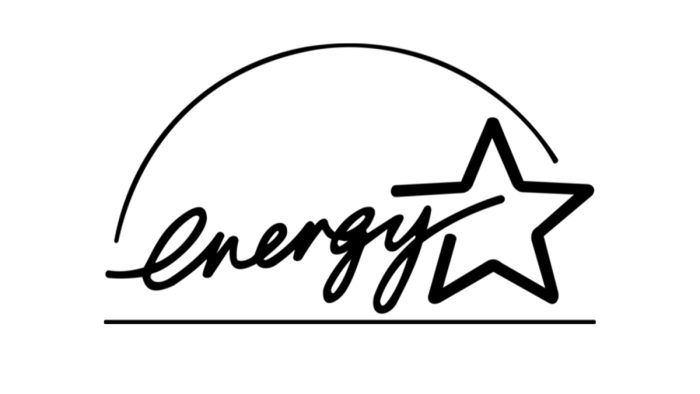
The Energy Star program has been around for about as long as the internet. Jointly overseen by the Environmental Protection Agency (EPA) and the Department of Energy (DOE), Energy Star was launched in 1992 to designate and promote energy-efficient appliances. But the program’s significance stems less so from when it was created than how it came about.
Energy Star was created as part of the 1990 Clean Air Act, the law that broadly defines the EPA’s responsibilities for improving air quality. By association, tethering a program focused on efficiency standards and lowering consumer energy costs to a law related to air quality and protecting the stratospheric ozone layer was prescient for its time. (Very few companies or consumers had made the connection between energy consumption and related emissions.)
In the ensuing 30-plus years, Energy Star’s impacts have been felt widely. Data from the program’s latest annual report indicate cumulative savings of over $500 billion in energy costs and 4 billion metric tons of GHG emissions avoided. Its popularity is also noteworthy.
The cast of product types joining the fray has steadily expanded to include everything from HVAC equipment and induction cooktops to entire real estate portfolios, manifest in the Energy Star Portfolio Manager benchmarking tool, first introduced in 2000.
The annual market value of Energy Star products is more than $100 billion, and “every dollar [the EPA] has spent on Energy Star resulted in nearly $350 in energy cost savings for American business and households,” according to the report.
The program, by all accounts, is well liked, omnipresent, and highly effective. And no legitimate voice on either end of the political spectrum was calling for it to end. All of which begs the question: Why is the Trump administration terminating Energy Star?
Turning Back the Clock
“This takes us out of a position of leadership,” says Vivian Loftness, an architecture professor at Carnegie Mellon. That is, for all intents and purposes, a gross understatement. While the Trump administration’s withdrawal from the Paris Agreement, for instance, is meant as a nominal affront to climate action (the agreement is legally binding but, strictly speaking, unenforceable), ending Energy Star is a willful gesture to erase decades of progress achieved on a multitude of scales.
By the numbers, twelve U.S. states (CA, CT, DE, HI, MI, NJ, NY, OK, OR, TX, VA, WA) currently use Energy Star compliance as part of their energy codes. Nearly 40 of the more densely populated counties and municipalities in the country, including New York, Chicago, Los Angeles, San Jose, Columbus, and Austin have passed bills that require commercial and multifamily buildings of a certain size to benchmark performance using Portfolio Manager.
More than 700 efficiency program sponsors across the country use Energy Star in one form or another. Large home builders have incorporated Energy Star certifications for years, effectively leveraging their services on the efficacy of the program, not to mention the tax credits and utility rebates available to consumers and businesses. HERS (home energy rating) raters have increasingly relied on Energy Star performance guidelines in service of meeting certification requirements.
According to Cy Kilbourn, vice president of HERS rating software company Ekotrope, the practice of newly constructed homes obtaining both HERS scores and Energy Star compliance has become fairly common. “HERS raters are the primary inspectors and certifiers of Energy Star homes, and most raters include Energy Star certification in their portfolio of offerings to builders. A dismantling of the program will impact most raters’ businesses,” he says.
The crossover is palpable. Ekotrope’s data indicates that of the nearly 109,000 HERS-registered homes built in Texas in 2024 (representing the largest figure of any state), 84.4% met pathway requirements for Energy Star’s version 3.1 of the single-family new homes (SFNH) program. “I’m not sure how utility programs are going to function,” says Eric Winter, senior product manager with Ekotrope. “The ones that rely on Energy Star as a standard, will they still use the same sort of building performance standards? I don’t know what that will look like.”
Losing Our Edge
Loftness, whose CV includes decades of building performance research on behalf of the American Institute of Architects, National Institutes of Health, and other organizations, is hopeful that “the expertise that has evolved under the Energy Star program, both with Portfolio Manager and appliance labeling, will not be lost.”
She cites petabytes of data that have been gathered and stored on “a million private servers” and could feasibly be accessed once the program is relaunched, assuming it will be. “All that knowledge will not disappear!”
That sliver of cautious optimism aside, Loftness cautions that when combined with projected economic impacts of Trump’s trade tariffs, the U.S.’s ability to compete in global markets that deal in everything from HVAC equipment and home appliances to building control systems will suffer even more. “We are an interconnected world, and we know climate change is real. Tariffs will cause a whole separate set of challenges for high-performance building systems and technologies,” she says.
Assuming competition will wane, markets will suffer, and home builders and homeowners alike will feel the pinch of higher costs and fewer incentives, this leaves the question of what will take the place of Energy Star “In a climate of uncertainty, it would be challenging for states and cities to fill the gap, particularly if a very popular tool like Portfolio Manager goes away. You need a universal measuring stick to benchmark and compare buildings,” says Ken Sandler, Ph.D., a clean energy professional and former sustainability advisor with the General Services Administration (GSA).
Sandler cites ASHRAE’s Building EQ as a viable alternative but stresses the need for a single industry standard. “You could imagine a group like GBCI – which administers certifications for LEED, WELL, and other programs – picking up a version of Energy Star, although it would become a very different program.”
There is also the sticky matter of legality. Like many executive actions issued by Trump and his cabinet, laws cannot simply be undone with a press release. The Energy Star program was officially codified into law as part of the Energy Policy Act of 2005. So while funding, manufacturing jobs, and other things tied to the program may go away for a time, Energy Star itself may only be killed through legislation.
Brand Recognition
Home builders rely on Energy Star, as do a vast range of appliance and technology companies, utility providers, energy consultants, and state and municipal agencies. What began as a relatively modest public-private partnership to reduce power consumption in home computers has grown into a juggernaut that transcends industries and, by some estimates, has achieved 90 percent market recognition among American consumers, manufacturers, and retailers.
“Energy Star has been bipartisan from the start,” Sandler says. “It introduced the new approach of providing market-based incentives and rewards to balance out the threats and punishments presented by environmental regulation. And it proved wildly successful in the marketplace.” He continues: “It tapped into a deep interest in product differentiation in environmental and cost-saving success that won’t simply disappear if the program is killed.”
Energy Star’s wide brand recognition could be its saving grace. Short of this administration not having an exit strategy while also specifying a new industry performance standard, Sanders says he would “expect litigation by states, cities, and interested businesses and NGOs to restore this statutorily required and broadly popular program.”
— Justin R. Wolf is a Maine-based writer who covers green building trends and energy policy. His latest book, House Up on the Hill: The Revolutionary HMTX Headquarters, was just published by Ecotone.
RELATED STORIES
- In a Pinch, Choose Energy Efficiency Over Solar
- 10 Ways to Cut Utility Bills
- Financing for Energy-Efficiency Upgrades
Originally published on Green Building Advisor, May 2025.

